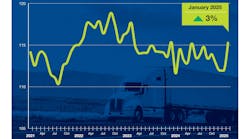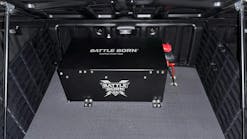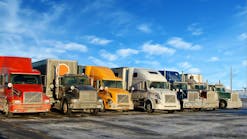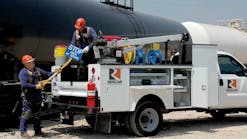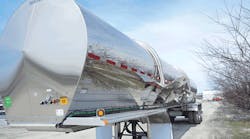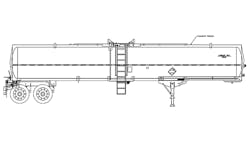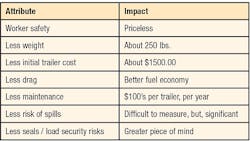CTRMC report looks at risks faced by drivers and other workers on cargo tanks
The CARGO Tank Risk Management Committee (CTRMC) recently published this white paper to explain the group’s key objective to improve the safety of personnel who work on and around tank trailers and tank trucks.
At one of the first meetings of the CTRMC in 2010 a participant shared the following example of a situation encountered too often in our industry—the transference of risk:
“One of our drivers was at a chemical shipper in the Gulf Coast, he said. “The shipper informed our driver the loading process was complete, and he could begin his journey to the consignee.
"Of course, our driver was a steward of the hazmat contents of his tank trailer, and needed to assure load securement. But, the shipper had a policy forbidding any non-employee from accessing the top of a tank trailer on their premises.
“So, our driver proceeded past the facility gates, and before accessing public highways climbed atop the tank trailer—in a raging downpour—to check the top fittings, including the cleanout caps near the ends.”
Unfortunately, the above example is NOT a rare occurrence. At the 10th General Meeting of the CTRMC in March 2015 a member of a Driver Panel shared the following:
“Regularly, I need to climb the top of the tank trailer, and then, crawl on the top ‘catwalk’ on my hands and knees to check the end cleanouts of a chemical tank trailer.”
Such reports prompt many questions, including:
Why would any industry stakeholder, or a group thereof, allow for a process where a worker is prevented from performing duties in the safest possible fashion?
Are the end cleanouts on a chemical tank trailer really necessary?
The former question essentially was the impetus for the formation of the CTRMC. Indeed, mitigating the ‘transference of risk’ is a journey and will be addressed at every ensuing deliberation of the group.
The latter question merits closer examination, and has become an enduring focus of the CTRMC.
For a visual representation of the location of these end cleanouts, see Figure One.
Historically, the end cleanouts of a chemical tank trailer have been used to facilitate the ‘dropping’ of spinners into the tank to assure the entire inner surface of the vessel is cleaned between loads. Of course, a clean tank is of paramount importance to prevent contamination, corrosion, and other perils.
But, what was deemed ‘necessary’ 40 years ago may not apply—entirely—today. Effective tank cleaning is dependent on several variables, not the least of which are:
1. Spinner technology
2. The chemistry of cleaning agents
3. Wash rack processes.
Certainly, improvements have been made relative to these three factors (and others) in recent years and decades? And, such advances will continue?
But, when exactly, does the threshold occur where end cleanouts are NOT necessary for typical chemical tank trailers?
For several major tank trailer carriers, this threshold has already been crossed. But, now, how do we—as an industry—segue to where end cleanouts are the exception, and not the rule, for many stakeholders?
At recent CTRMC meetings, participants have crafted and discussed the following value proposition, associated with eliminating end cleanouts. The summary table is only partial.
This compelling value proposition suggests we continue to coalesce as an industry and reach the threshold, where end cleanouts are the exception.
In coming months CTRMC members and major wash racks will continue controlled comparison testing of spinner technology, cleaning agents and wash rack processes. Some of this testing will occur with difficult-to-clean commodities. Perhaps, in the near future, the objective testing data will indicate we have crossed the threshold—for all stakeholders.
What can you do?
1. Carefully consider if end cleanouts are necessary on your equipment.
2. Attend upcoming CTRMC General Meetings to learn about the latest developments and contribute to the dialog. Check www.cargotanksafety.org for meeting details, which occur every September and March.
3. Take an industry perspective of workplace hazards, and help ensure stakeholders do not cause a ‘transference of risk’ to the detriment of workers. ♦
